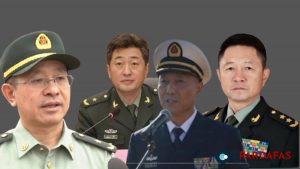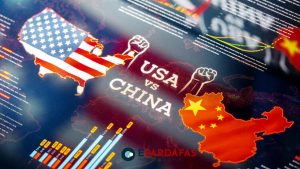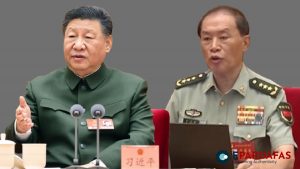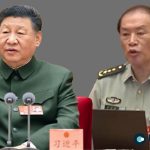
What Japanese Deterrence Would Look Like

LONDON – Japan’s response to Russia’s invasion of Ukraine, and to the “strategic partnership” that Russia and China announced shortly beforehand, has been impressively decisive. The government’s proposal for a near-doubling of the country’s defense budget over the next five years demonstrates political realism and practical determination. The key question now is how to spend the money.
In its new National Security Strategy and National Defense Strategy, Japan acknowledges that it must continue to work with allies – especially the United States, with which it has had a security treaty since 1951 – if it is to defend itself and help maintain peace in the region. But these documents also offer something new. The government has publicly stated its determination to take the leading role in Japan’s self-defense, and to deter others from attempting “unilateral changes to the status quo.”
This commitment to deterrence is the most important task that Japan has set for itself. But it is also the most difficult. It means deterring an attack – conventional or nuclear – by North Korea. It means deterring aggression by Russia (such as from the four Kuril Islands off Japan’s northern coastline, which the Soviet Union seized in the final days of World War II). But most of all, it means deterring moves by China against either Taiwan or Japan’s strategically located Nansei Islands nearby.
Everyone knows that by “unilateral changes to the status quo,” the document is referring primarily to a Chinese invasion or blockade of Taiwan. Japanese Prime Minister Fumio Kishida raised the same issue at the June 2022 IISS Shangri-La Dialogue in Singapore, where he memorably warned in his keynote address that “Ukraine today could be East Asia tomorrow.”
For those of us who grew up during the Cold War, the word deterrence calls to mind nuclear weapons and the fearsome but ultimately reassuring doctrine of “mutual assured destruction.” But Japan does not have that option. Speculation about the country’s potential acquisition of nuclear weapons is just that: the Japanese are not going down that road any time soon – and certainly not under Kishida, whose hometown is Hiroshima.
Japan’s new defense build-up also reflects the sober recognition that the country may not always be able to rely on American protection (nuclear or otherwise). That would be especially true if Japan did not in the future make a significant contribution to the broader shared task of deterring China, Russia, and North Korea.
That is why the new strategy includes an eye-catching mention of acquiring and building “counterstrike capabilities,” meaning a force of missiles that potential adversaries understand can be used to retaliate swiftly or even to carry out pre-emptive strikes. Though the idea of a pre-emptive strike capability remains controversial, the principal aim is not to use the new missile force, but rather to be known to have it. That is the essence of deterrence.
Speed and power are the two principal characteristics of such a counterstrike capability. Top-quality intelligence, whether gathered alone or in collaboration with the US, will also be crucial in establishing the credibility of deterrence, because only then can the power of a counterstrike capability be used at the necessary speed. And building a credible counterstrike capability will be vitally important in improving Japan’s ability to deter its potential adversaries to the north and west – Russia and North Korea.
But the adversary to the south, China, presents a more difficult challenge. In recent years, Japan has been much clearer in signaling its opposition to “unilateral changes to the status quo” concerning Taiwan and the East China Sea. It has also made clear that its self-defense forces would support US forces in the case of conflict with China. But, again, deterrence in these theaters depends on Japan developing a credibly fast and powerful response capability.
To that end, Japan must not only modernize and expand its maritime, land, and air defense forces; it also must change how they are deployed. Although the Japan Maritime Self-Defense Force – what others call the navy – and the large, well-armed Japan Coast Guard fleet do operate throughout the country’s huge territorial waters, neither they nor the army or air force has any significant base or supply depot in the southern Nansei Islands near Taiwan.
Without such bases, it does not really matter how powerful Japanese forces become, because it will still be too difficult to deploy them rapidly to the most likely conflict zones; and, crucially, it will be impossible to convey to Chinese strategists that Japan is indeed capable of a rapid mobilization. The potential to contribute to a military engagement only weeks or even months after the fact is unlikely to have a serious deterrent effect.
Joint use of US bases, both on the main island of Honshu and on the southern island of Okinawa, could help. But the biggest contribution would come from China knowing that any attempted invasion or coercion of Taiwan would be met by a powerful military response from nearby Japanese forces. That means establishing proper military bases in the southernmost islands.
Again, this will not be easy. The political sensitivities around Tokyo-based rule are as acute in these southern islands as they are farther north in Okinawa. Supplying such bases and making them suitable for long-term, year-round occupation will be costly. Yet this will be the real test of Japan’s new defense strategy over the next five years and beyond. Are Japanese capabilities sufficient to change Chinese military planners’ risk calculations? That, in the end, is what deterrence requires.
Bill Emmott, a former editor-in-chief of The Economist, is Chair of the International Institute for Strategic Studies and the Japan Society of the United Kingdom.
Copyright: Project Syndicate, 2023.
www.project-syndicate.org













Comments